New Science: The Giant Water Bug of Japan
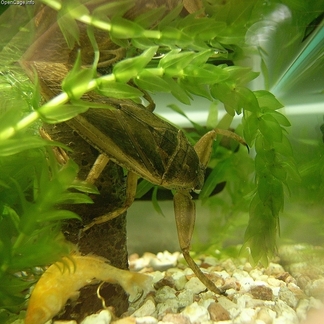 "Giant Water Bug Lethocerus deyrollei" by OpenCage Environmental Graffiti just published "Giant Water Bug: Japan's Dangerous Yet Endangered Carnivorous Insect". Could Japan's Giant Water Bug possibly menace humans with its venomous bite? It is a deadly predator of amphibians and fish, but is it beneficial to people? How could such a formidable insect be flirting with "endangered" status? You will just have to read the article to learn more!
Updated Health Article on Energy Drinks
Thanks to a news item in Medical Xpress, I updated " Caffeine And Sugar In Energy Drinks: A New Health Crisis?" The new problem stems in part from potential drug interactions between the energy drinks and what else a young person might be taking. Shameless Self Promotion
As if everything here were not "shameless self promotion", may I also note that I updated my DeHaan Services site with a blog post that also promotes these articles.
My latest published article is " Introducing the Golden Ratio" at Decoded Science. 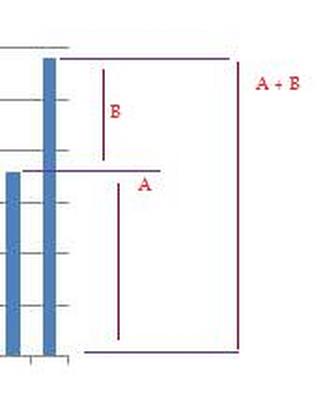 "Golden Ratio AB" by Mike DeHaan My article explains what this ratio really is, and mentions just a few of the places it shows up in art and architecture.Of course I also publicized this article in "Science Articles for May 31". Writing Tip: I wrote on this topic because it relates to my previous article about the Fibonacci Series. Naturally I cross-referenced from the new article back to the previous one. And I sent a thank-you to my editor for going back to my previous article and forward-linking to my new one!Every reader who follows internal links improves the article and site statistics. This includes the increasing the number of page views, increasing the total time on site, and decreasing the "bounce" rate. As well, search engines may find a site more credible if it has internal links: this means that topics are developed in greater depth rather than being one-page wonders. TIP SUMMARY: If you write multiple articles or pages at one site, cross-reference them if: the site permits; the articles truly are related; it does not clutter an article with too many internal links.
Today two completely different articles were published on two completely different subjects at two completely different sites.
Numerologists need not apply; there is nothing special about "two, two and one" as far as I know.
Super-Powered Reindeer
 "Image of Svalbard Reindeer" by Billy Lindblom Submitted yesterday, "The Reindeer Superpower: Ultraviolet Vision" explores the advantages an arctic herbivore has when it can see ultraviolet light.
 "One Reindeer in Kebnekaise Valley, Lappland, Sweden" by Alexandre Buisse (Nattfodd)
There are more great images in the story, but as a writer, I thought my words were pretty good, too.
Warm Up Before Exercising
I also wrote " Warming Up To Exercise" today. Cold muscles should not be exercised, but only exercise warms up the muscles. This article explains the " warm up paradox" and presents five tips to safely warm up before exercise. Publicity via DeHaan Services
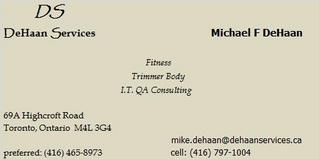 "DeHaan Services" business card Of course, I also wrote about these articles in my DeHaan Services blog post, " Reindeer and Warm-Up Exercises in Separate Articles". The "Exercise" article is especially appropriate in this site, which hosts my fitness and weight control clinic. Come to think of it, I publicized previous articles there too. "The Fibonacci Sequence at Decoded Science" and "Three Articles about Curcumin and Turmeric" were self-publicizing articles that I posted in DeHaan Services blogs also.The writing tip is: pursue shameless self-promotion through publicizing your own articles.
Today my " Introducing the Fibonacci Sequence" was published at Decoded Science. 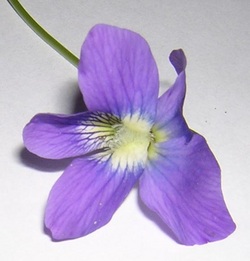 "Floral Fibonacci Number" by Mike DeHaan One example of Fibonacci numbers in terrestrial lifeforms is the number of flower petals in many species. In addition, the Fibonacci sequence opens a path to several important mathematical concepts. My article at Decoded Science tells how to calculate Fibonacci numbers. I've also publicized this article in my DeHaan Services home site, in the brief " The Fibonacci Sequence at Decoded Science" article.
Yesterday I submitted three articles based on research triggered by reading one article. I have to thank Medical Xpress for publishing " Curcumin compound improves effectiveness of head and neck cancer treatment" on May 19. It gave an interesting report on some promising results. I then chose some different angles for my articles, and researched much more broadly.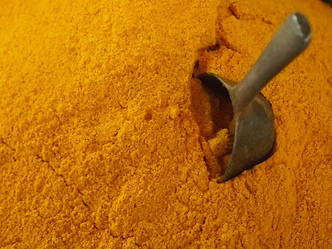 "Powdered Turmeric Spice" by Cherrie Rhodes My first article to be published in response is " Limited Conclusions for Curcumin from a May 2011 Cancer Study" at Suite 101. My point is to look carefully at how much the original research claimed and what it was careful not to exaggerate. In part, that whole article stemmed from my first reaction to the Medical Xpress article: "Wow, I should eat more curry"! (Wrong).
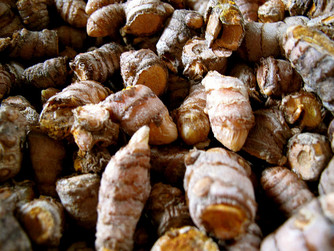 "Turmeric Rhizomes" by shaggyshoo Second out of the publication gate, to use the horse-racing metaphor, was the " Brief Survey of the Health Benefits of Curcumin" in Decoded Science. I had found a number of web sites and headlines praising curcumin's role in traditional natural health as well as in new biochemical research. This article makes a broad sweep through the field.Why does this Weebly article have a picture of turmeric rhizomes? You will just have to read the other articles to learn!
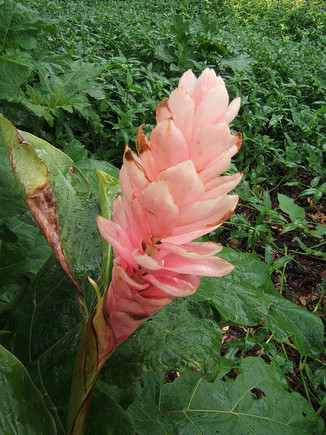 "Turmeric Flower" by jongela19 Last to reach the Internet was the " Turmeric: India's Mystic Curry Spice" in Environmental Graffiti. This article's focus is on the plant, much more than on its uses. However, I could not refrain from saying why the plant is worthy of notice.
Writing Tips: This was the first time I wrote three articles at once. The big key was to decide the different slants to take with the three articles. In this case, my approach was: - Highlight the plant in Environmental Graffiti
- Focus on the one report for Suite 101
- Make a broad sweep of curcumin for Decoded Science
One mistake I made was to submit all three articles simultaneously. Had I waited for the Environmental Graffiti and Suite 101 articles to be published, I could have easily "suggested further reading" by including links to those articles in the Decoded Science article.
My main business site is DeHaan Services, where I sometimes blog about events in Toronto or about fitness opportunities and challenges. Here's a summary of two recent articles. On Friday the Thirteenth of May, I wrote "Dueling Marathons in Toronto versus Mississauga in 2011". For the first time, the Goodlife Fitness Toronto Marathon and the Mississauga Marathon were scheduled head-to-head for May 15th. This article compares and contrasts these two, and also mentions the other Toronto rival, the ScotiaBank Toronto Waterfront Marathon, which is held in the autumn. This was, in part, a public service announcement since I also provided links to the official road closure announcements. "I Registered for the 2011 Toronto Challenge 5Km" was published on May 18. I did exactly what the title says I did. The article provides more background for the event; why it is worth entering; and some of my fond memories from previous years. Writing Tips: One key point is to write about "what you know". I've run in all the events mentioned; they are in my home city. Another point is to write about "what you love". ; I'm passionate about fitness, the value of running, and the importance of these events for runners and for the charities that raise funds through such events. The final point is "timeliness". I was a bit slow in writing about the two marathons, but gave plenty of time for runners to train for the autumn Waterfront marathon. By contrast, I published the Toronto Challenge article about a month before the event. That is plenty of time to train to walk 5Km...which is an accepted activity for this event...and also enough time to raise funds for one of the charities.
Today, Environmental Graffiti published my article, " Is the Beloved Polar Bear Truly an Endangered Species?".  "Encounter with a Polar Bear" by Aramisse For those who seek polar bear pictures and polar bear facts, this article gives an introduction to the marine mammals who are so cute...unless you are a seal. It also asks what, if anything, has endangered polar bears? Writing Tip: Choose popular topics whenever possible. I chose the topic of "an animal that is an endangered species" for Environmental Graffiti because it generates a lot of page views for me. The "polar bear" came up as a favourite animal. As well, Knut had been in the news earlier this year. I usually see an increase in page views right after a new article is published at Environmental Graffiti, but the last topics on "useful plants" did not generate as much traffic as some other topics. With luck, I will find a spike in readership for May 17-19 or so. Another writing tip is to cross-publicize wherever possible. While I have always publicized my articles on my DeHaan Services blog, I have only just begun to also cross-link with my Weebly posts. " Report on Polar Bears: Are They Truly Endangered?" is an example.
Today I submitted my first article to the new web site being developed by Victoria Nicks. " Decoded Science" is "...the source for new and exciting developments in the scientific community". 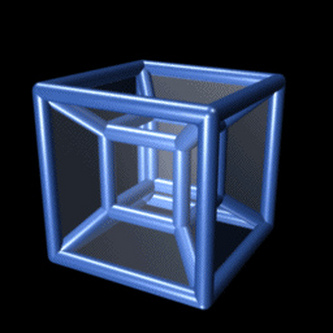 "Eight Cell Tesseract Image" by mmhydrazinen04 My first article is "The Tesseract: Folding and Unfolding a Simple 4D Hypercube". In math, every tesseract is a hypercube but not all hypercubes are tesseracts. My article gives a simple introduction, with some fascinating visuals. By the way, Decoding Science uses a Wordpress theme.
I kicked off a planned set of articles about cinnamon with " Cinnamon: Asia's Popular Spice Tree" at Environmental Graffiti. 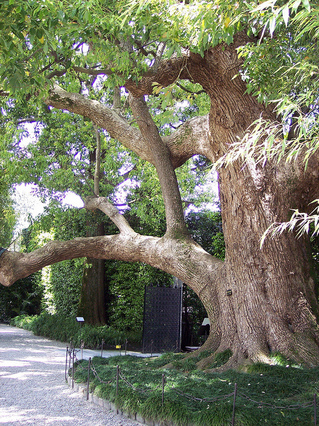 "Cinnamon Tree at Lake Maggiore" by rosemarydukelow
Naturally you know and love the spice, and you might have been told that cinnamon comes from a tree.
Did you know where cinnamon trees grow and are cultivated? Or what part of the tree gives us powdered cinnamon or cinnamon sticks? That's what my first article reveals.
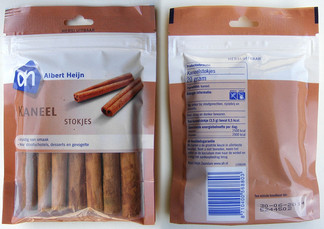 "Cinnamon Sticks and Cinnamon Powder Spice" by FotoosVanRobin Trust Suite 101 for Natural Health via CinnamonOn May 13 I published the " Important Health Benefits of Cinnamon in the Human Diet" on Suite 101. This article's focus is on eating cinnamon as a spice. People with type 2 diabetes, and those trying to avoid a heart attack, are also encouraged to read and decide whether to increase their consumption of cinnamon powder. Let me thank Natural Health Science News for listing me in their directory and sending at least one reader to my article on May 17. Adding Spice to a Squidoo LensWhile I was at it, I updated the DeHaan Lens for Weight Control through Diet with some comments and recommendations on using cinnamon. It also points to some products available through Amazon. As always with articles and advice oriented to health, it is important to check with one's physician before committing to a radical change.
While Arnica has a long history as a natural remedy, my article " Arnica has a Controversial Place in Natural Medicine" in Suite 101 points out some concerns. 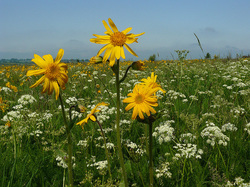 "Image of Arnica in a Field" by Frank.Vassen
Although Arnica gel (or cream, etc.) is considered safe when applied to unbroken skin, why are oral homeopathic treatments containing Arnica treated with concern? Are there health risks or side effects?
This article is an example of "research once, write twice". I started the research on Arnica with the plan of writing about the plant, pictured above, for Environmental Graffiti. (I did so, and hope to publicize it early next week when that article is published). But I also wanted to highlight the fascinating controversy over this plant as a health topic, which is more suited to Suite 101.
By the way, this was published sometime on Saturday. By Sunday afternoon, it had been read several times, with no "search" results shown. That leads me to believe people were reading Suite 101 as a magazine, rather than searching for a specific piece of information. That echoes a pattern I have recently noticed at Environmental Graffiti, also.
Tip: If the topic begins to branch out, consider writing separate articles. Each article needs its own focus. Sometimes they belong in a series in one publication; sometimes each needs to go its own way.
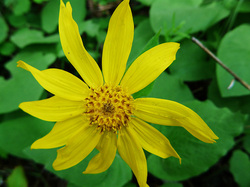 "Heartleaf Arnica in Montana" by photogramma1 The sister article was published on Monday in Environmental Graffiti. "Arnica: The Medicinal Flower Mired in Controversy" was intended to focus on the plant itself, rather than to dwell upon the risks and benefits of using it as a natural herbal remedy.
|
















 RSS Feed
RSS Feed